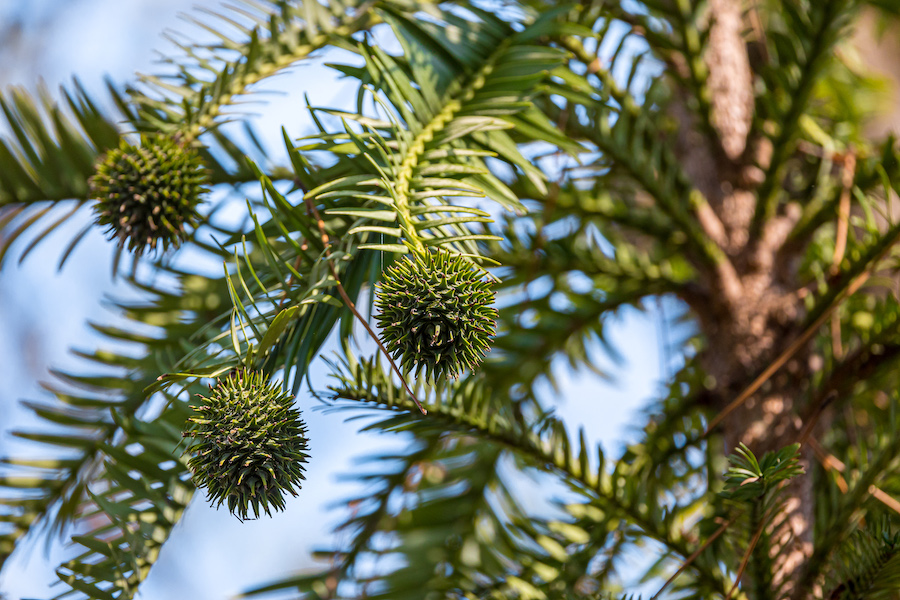
In Darwin Crater we have recently introduced Winkleigh, the wombat female, to the public. Now we are expecting the arrival of the breeding group of Tasmanian devils. And between these two major events, one more has been squeezed in: We now have a contemporary of dinosaurs in this exhibit. It is Wollemi pine, whose unbelievable story began to unfold in front of the eyes of people all over the world less than thirty years ago.
In September 1994, David Noble with his two friends was exploring one of the countless canyons in the Wollemi National Park. Canyoning was a great hobby of his, and according to the blog he writes, it still is. At that time, when the group was having lunch after abseiling down to a stream, he noticed a group of strange trees. He did not know them; therefore, he took a small twig with him when leaving.
Probably no one would have expected that a ranger of the National Park Noble would make in the Blue Mountains (less than 200 km away from the four-million-town of Sydney) one of the greatest botanical discoveries of the 20th century. But that is exactly what has happened.
At the National Park administration Noble handed the twig to the botanist Wyn Jones. He put it aside, saying that he didn’t have time to examine it. Only after several days he asked Noble if he took it from some bush. When Noble told him that it comes from a tall tree, his interest has raised. But it still took a while before it came to light that it was something truly extraordinary.
Then a bomb exploded. All the world learned that Noble had come across a group of trees that were identical with fossils as old as 100 and 120 million years. Amateurs, and even more so experts, were astonished when they learned that in a small distant canyon, which protected them from fires and drought, the contemporaries of dinosaurs survived. A story like from The Lost Word of A. C. Doyle!
The trees “from the dinosaurs’ era”, discovered by Noble, were up to 40 metres high and their main trunks with bark resembling bubbling chocolate were almost one meter in diameter. However, the strangest thing was that the large, flat, and soft needles of these trees grew along the terminal twigs similarly to fern ribs. This placed them within the family of araucarians, a very old group of coniferous trees, whose representatives occur at the Southern Hemisphere. The botanists Jones, Hill and Allen then described them as Wollemia genus, according to the area of their present-day occurrence, and nobilis species, which means “noble”, but also refers to Noble.
The locality, where Wollemi pines were found, immediately became a subject of a strict secret and access to it was prohibited under a huge penalty. Even Noble himself visited it for the last time in 1995. The reason was not only the interest of various growers in these trees, but above all the fear of introducing various pathogens, which could liquidate Wollemi pines very quickly.
In addition to the group of Wollemi pines discovered by Noble, two more localities of their occurrence were successfully discovered in Blue Mountains. Even so, this living fossil is still extremely vulnerable. Therefore, cultivation of Wollemi pines has been initiated. First Australian botanical gardens received the trees created by cutting, and in 2006 – after the worries about introducing pathogens into the natural growth were confirmed – Wollemi pines were released for sale internationally with great media attention. Today, Wollemi pines are commonly seen in botanical gardens as well as private homes – and one beautiful specimen you can find also at the entrance to Darwin Crater.

